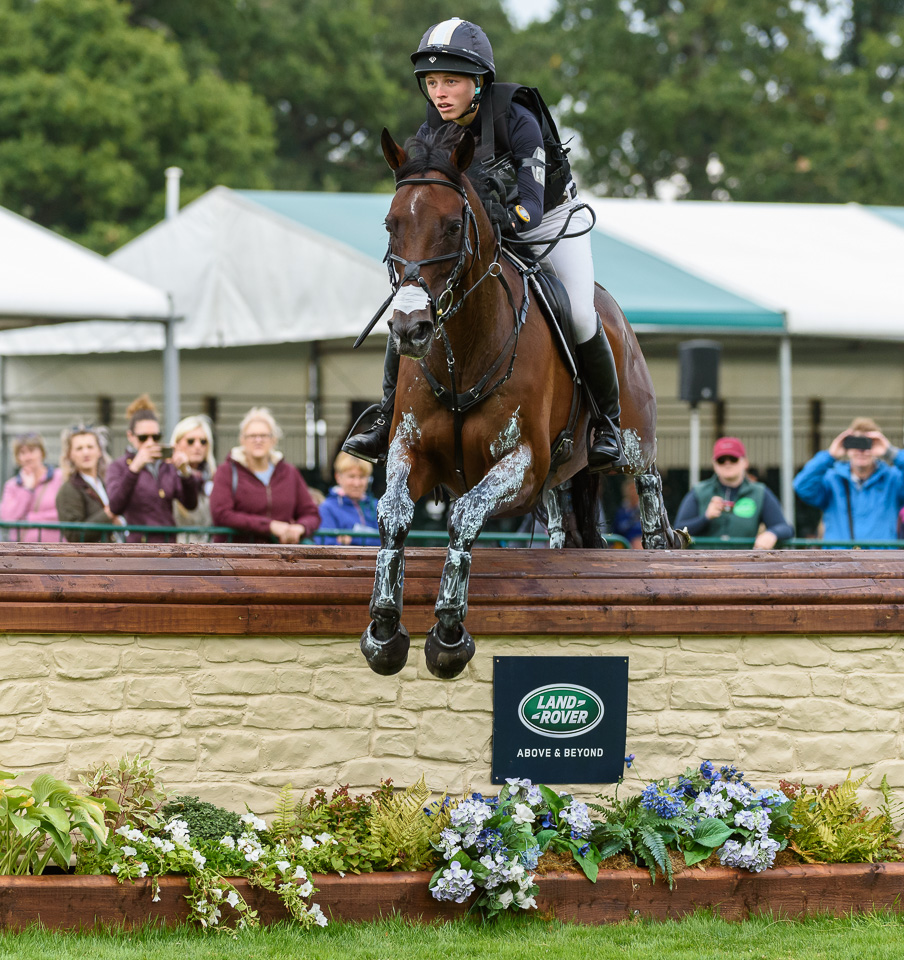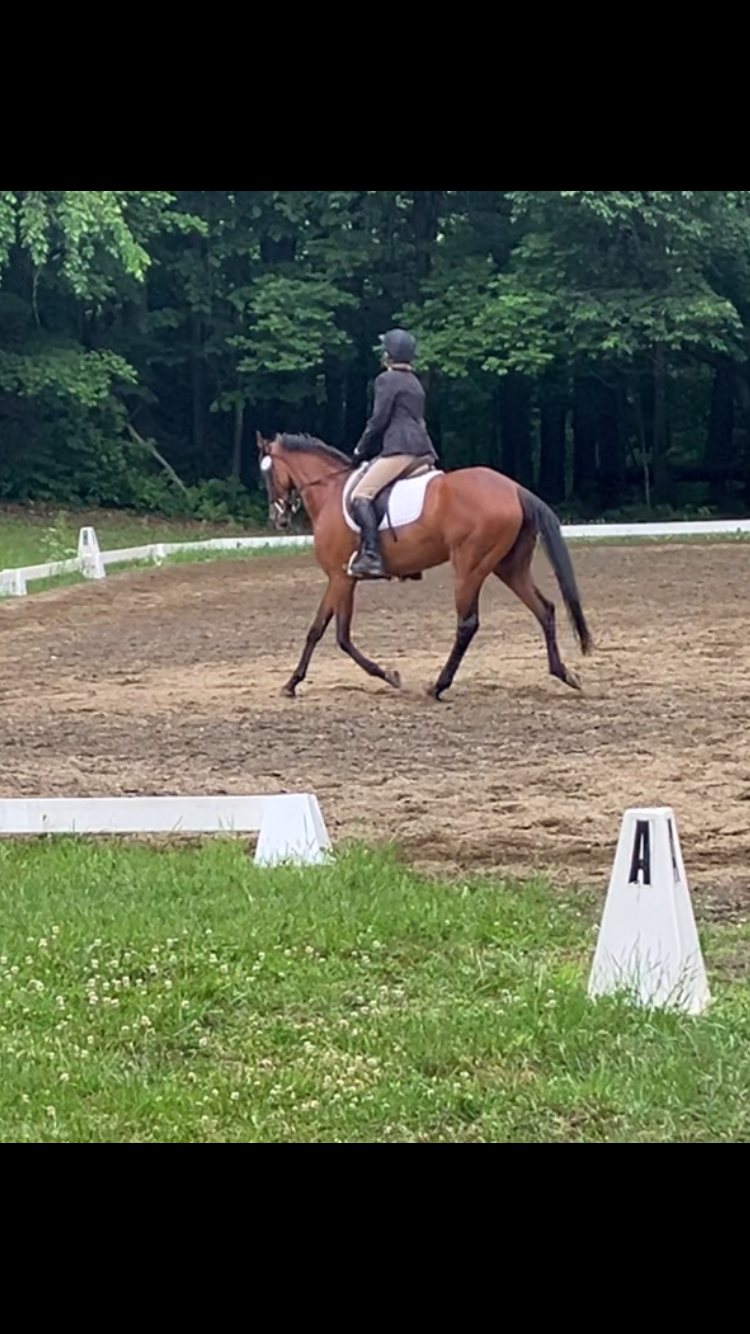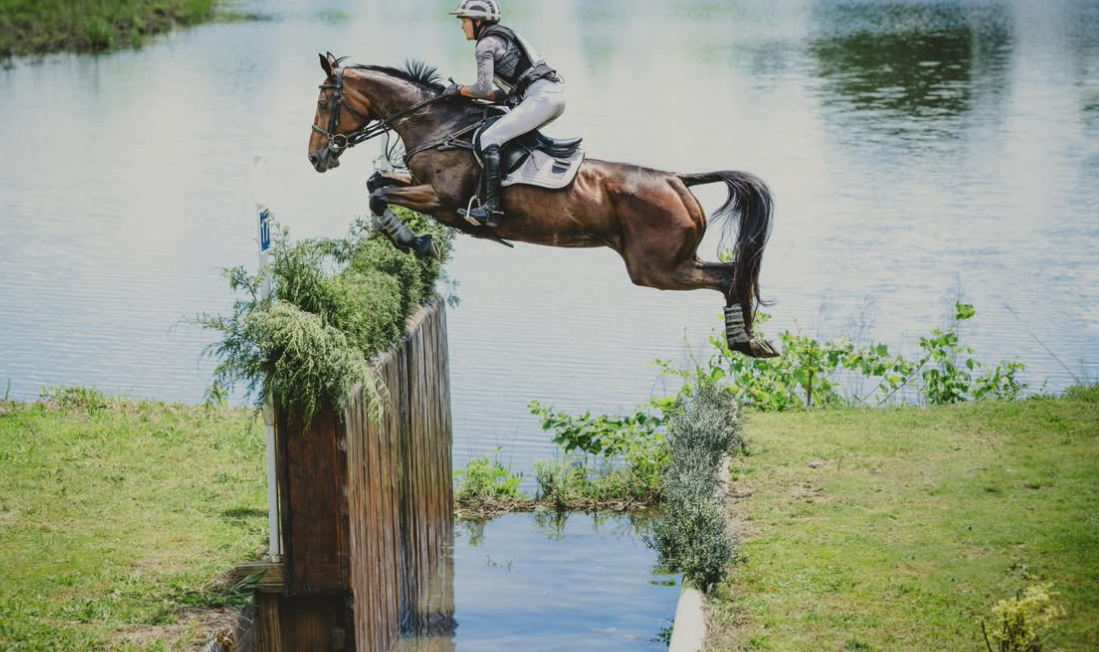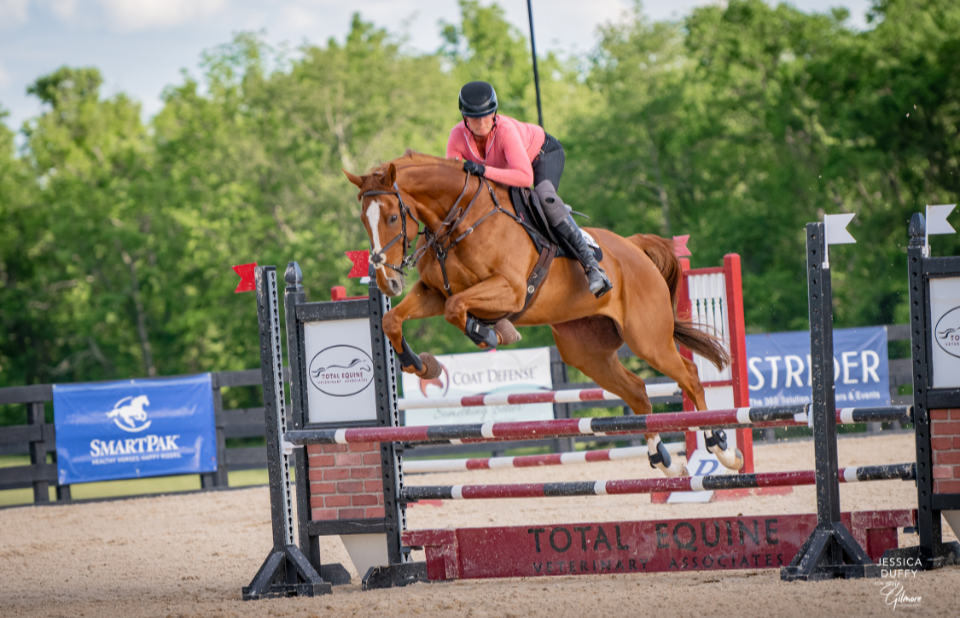It seems like these days we look at each other’s lives through the lens of a highlight reel. We get to see the incredible trips, the best jumps, and the moments that we’re proud enough of to put on social media. What we don’t talk about is how much pressure this adds to athletes on both ends of the news feed.
Riders, whether professional or not, are made to feel like they ‘have to’ post something that makes them look cool and successful. Then, as we consume this content, we are stuck with the disillusioned perception that the sport is easy and that if you’re not succeeding, then maybe you aren’t cut out for it. I would like to take this opportunity to go ‘between the ears’ of some of the riders that make up our Eventing Nation and work to understand some of the real challenges this industry presents.
On this edition of Between the Ears, I caught up with 5* Rider, Woodge Fulton. Woodge runs FMF Equestrian with her partner David Ziegler out of Full Moon Farm in Finksburg, MD. Talking to Woodge, it was clear that she agreed with the core inspiration of this series: what you see on social media is not always what you get. Woodge grew up on a farm and has had the opportunity to travel the globe, attending competitions as both a groom and a rider. At just 28 years old, Woodge has already collected experiences and insights that are worth reading. So let’s get between the ears.
To read more “Between the Ears” interviews, click here.

Woodge Fulton and Captain Jack. Photo by Jenni Autry.
Can you tell me a little bit about how you got into horses and the sport of eventing?
I’m very lucky that both of my parents are in the business of horses. My mom started her career in zoology. She ran quite a few zoos around the country, and she ended up at the National Zoo. Missing the horses, my mom went to ride at a local barn, where she met my dad, who was managing the farm. They bought Full Moon Farm together the year before I was born, so I was lucky to be brought up on a farm.
My sister Grace and I did a ton of things with horses growing up, mostly English, but I also did a brief Western stint and went to the Quarter Horse Congress. Eventing started to be the clear path forward when I was lucky enough to get an older Advanced horse that no longer wanted to compete anywhere close to Advanced, and she helped show me how fun the sport can be.
My parents were open to both my sister and me doing other activities growing up, but I think growing up in that environment, we were both naturally attracted to horses. Having my parents to look up to and seeing the business that they built was and is incredibly inspiring and humbling. No one could shelter us from the realities that come with horses. On Christmas and snow days, Grace and I were in the barn, mucking stalls.
I think a lot of people dream of a life with horses, and I feel grateful that for me, those dreams were solidified, knowing the difficulties that come with the lifestyle and not looking through rose-colored glasses.

Woodge Fulton and Captain Jack. Photo by Leslie Threlkeld.
Can you tell me about a time that you lost your confidence in riding or competing?
The last time I truly lost my confidence was when I went to Burghley in 2019. I had a really scary fall close to the end of the course. Somehow, we both walked away fine, but I knew that I had come close to dying and killing my horse at the same time. He had come down on top of me, and there was a good bit of time where he was not moving and I could not feel my legs.
I was so scared, and I didn’t know what it would look like moving forward from something like that. I walked him back to the barn myself and couldn’t help thinking it was uncomfortable to have something so drastic happen without any consequences. I know that sounds strange, but when I’ve had bad falls in the past, they’ve typically come with injuries and time off to think through what happened and what could have been done better.
I’ve had time to grieve and process. In this case, I was ending my time overseas, so I went home and was immediately back out competing. I took five horses to a local show without a break. I knew I was scared and didn’t want to have another fall, but of course, when you ride scared, you don’t ride that well.
So I had these young horses, luckily all going training and below that, I gave bad rides to. I was trying double as hard and double as fast, and that wasn’t going to bring my confidence back.
Luckily, though, it was the end of the season, and I was able to reset my confidence through the natural progression of the off-season: jumping cavalleti, taking the horses out at lower levels to knock the dust off, and that kind of thing.
That being said, this is probably the first show season that I haven’t come out of the start box at the first show worried about making the mistake again. It takes time and discipline to regain confidence.

Woodge Fulton and Captain Jack. Photo by Nico Morgan Media.
Can you tell me a little bit about how you experience and deal with burnout?
There are a lot of things that trigger burnout for me. My mom is like superwoman, and she always has a buzz of energy. It seems like she thrives in chaos, and I am not that type of person.
It’s taken me a long time to realize that it’s okay that I’m not that kind of person. I love a schedule, and I love when things are planned. Obviously, with horses, things don’t always go to plan, and I know that, but I find that I get stressed out and burnt out when I’m not in control. I’ve been working on being more adaptable to changes in the plan, and that’s been helping.
I also struggle in the winter when I don’t have as much daylight to get things done. It’s stressful trying to find out what you can trim out of your day to make it all happen, and ultimately, that can be draining, not to mention the lack of sunlight. After spending so much time working in a strict program, I find it hard to give myself a break. You want all the horses to get all the things, but I think part of managing burnout is realizing that on some occasions, it’s OK if a horse only gets a 20-minute hack instead of an hour-long one.

Woodge Fulton and Captain Jack. Photo by Leslie Threlkeld.
What advice would you have for someone in the sport who’s currently facing adversity?
If you’re facing adversity, I think the best thing to do is to take the time to be sad about it and process how much it upsets you and why it upsets you. I don’t think I would have said the same thing even just a few years ago, but it’s OK to feel sad.
It’s the equestrian culture to love the struggles and the hustle. If your horse breaks, you’re told to start looking for the next one. If you get injured, you’re supposed to find what you can do to stay fit enough so that you can get right back out and compete as soon as possible. I’ve done both of those things and found myself set back further because I had to deal with unprocessed and complicated emotions.
I think it is equally important to make sure that the people you have in your corner and the people who are advising you and helping you are also giving you the time and space to process.
There comes a time in a place when you need someone to give you a kick in the pants and say, “Okay, now it’s time to get over it and move on.” But that shouldn’t be the first thing that your coach, your parents, or your owner say to you; they should be there to comfort you while you feel all the negative emotions that come with adversity.

Savannah Fulton and Captain Jack. Photo by Leslie Threlkeld.
Is there anything else that you’d like to share with readers?
As a young person coming up in the sport, I wish I had been more aware that no one is perfect. You can love a musician’s music without loving them as a person, and the same thing applies to the stars of any industry. It’s really easy to idolize people without understanding the whole picture of who they are or what their life is actually like. No one is perfect, and we need to allow grace for that, but we also can’t put someone up on a pedestal and take everything they say as gospel.
As a kid, I wanted to do whatever it took to get to the top and be the best, and I still do, but it’s just as important for me to be a good person, love my horses, and make sure they feel good. I don’t think that means I’m not competitive, and I’m willing to make sacrifices, but I’m not willing to ruin my relationships or ignore my mental health. Medals and awards don’t do anything for me on a daily basis.
I think that if more people in this sport change their perspectives, it will lead to healthier careers and healthier workplaces. I know for a fact that thirteen-year-old me would read this and think, “She’s given up.” But as I’ve matured, I’ve come to realize that it’s so much harder to work on those relationships and to train your horses well while being a good person and a good boss than it is to just try to be the best at winning.







































